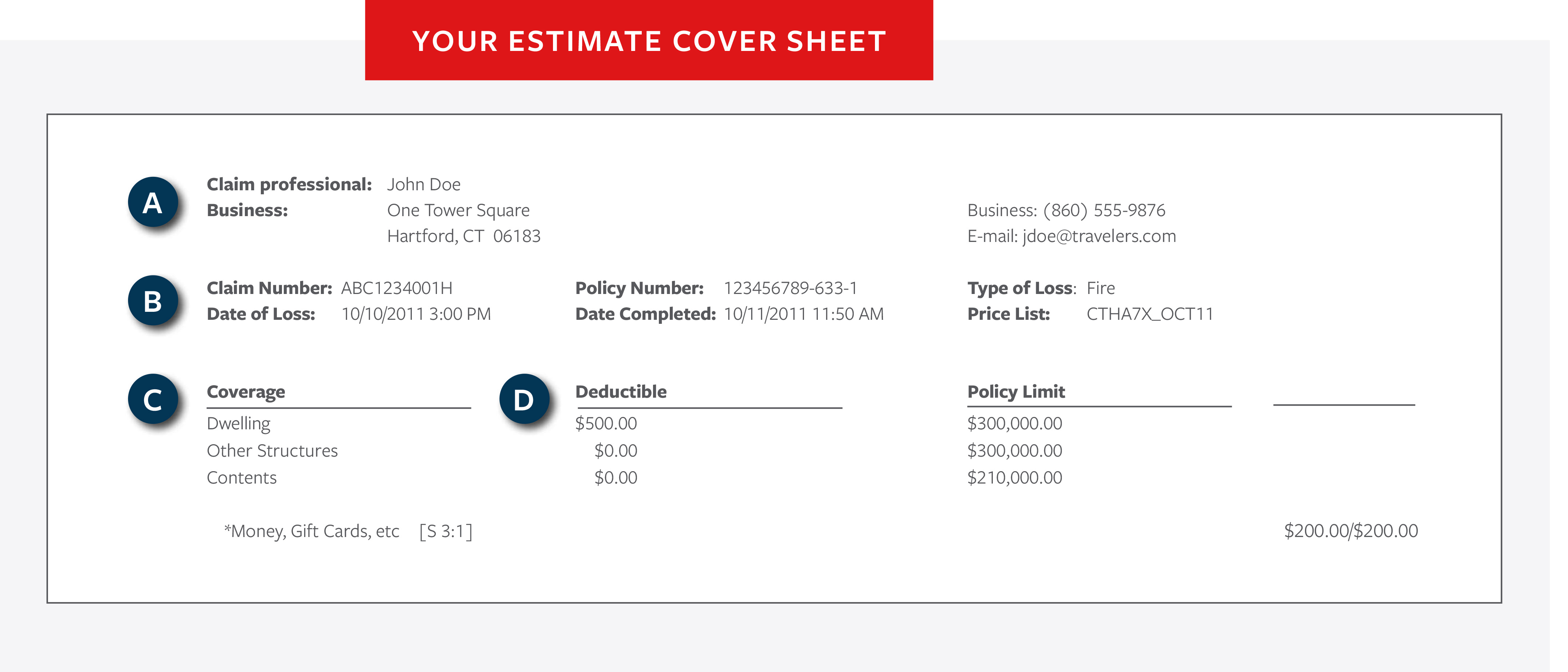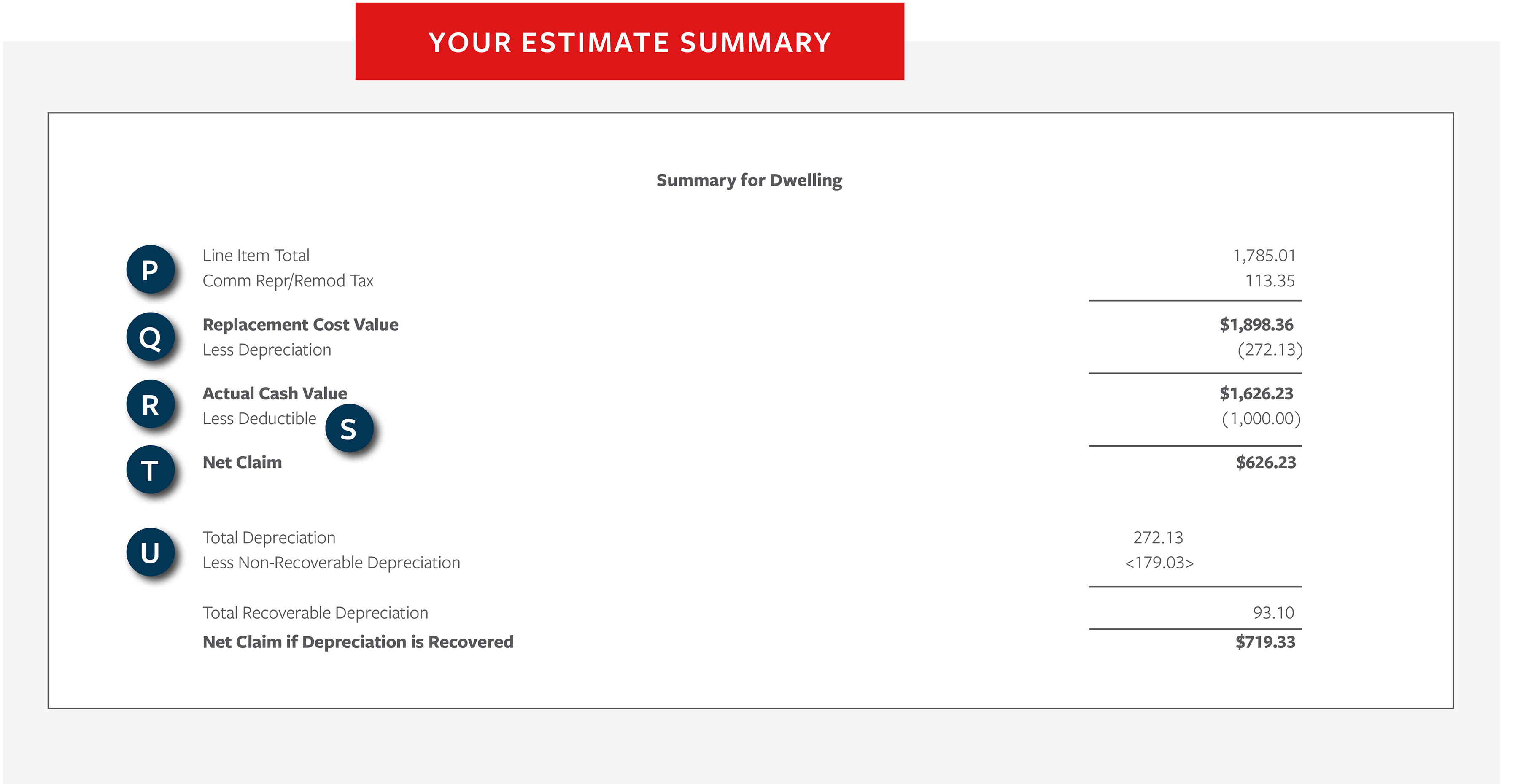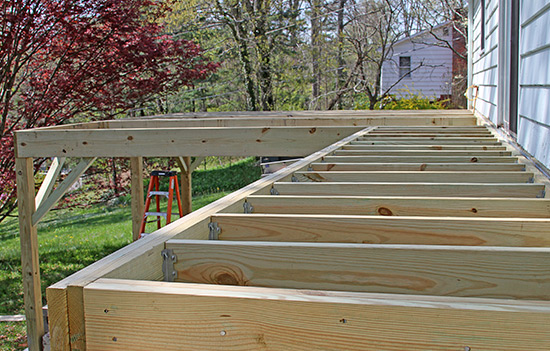Understanding Your Property Estimate

Your estimate cover sheet
The cover sheet of your estimate includes important information such as:
- (A) Your Travelers Claim professional's contact information.
- (B) Your claim number.
- (C) The types of coverage under your policy, including the applicable deductibles and policy limits.
- (D) Your estimate may include sublimits for specific items, such as money. Each sublimit has a unique ID tag. That ID tag will appear next to any line.

- Your estimate detail
This is where the details about your lost or damaged property can be found.
- (E) Description – Details describing the activity or items being estimated.
- (F) Quantity – The number of units (for example, square feet) for an item.
- (G) Unit – The cost of a single unit.
- (H) Replacement Cost Value (RCV) – The estimated cost of repairing a damaged item or replacing an item with a similar one. RCV is calculated by multiplying Quantity times Unit Cost.
- (I) Age – The age of the item.
- (J) Life – The item's expected life assuming normal wear and tear and proper maintenance.
- (K) Condition – The item's condition relative to the expected condition of an item of that age. (New, Above Average, Average, Below Average, Replaced).
- (L) Depreciation % – The percentage of the loss of value that has occurred over time based on factors such as age, life expectancy, condition and obsolescence.
- (M) Depreciation – Loss of value that has occurred over time based on factors such as age, life expectancy, condition and obsolescence. If depreciation is recoverable, the amount is shown in (). If depreciation is not recoverable, the amount is shown in <>.
- (N) Actual Cash Value (ACV) – The estimated value of the item or damage at the time of the loss. Generally, ACV is calculated as Replacement Cost Value (RCV) minus Depreciation.
- (O) Labor Minimums – The cost of labor associated with drive time, setup time and applicable administrative tasks required to perform a minor repair.

Your estimate summary
For each type of coverage involved in your estimate, there is a summary section that shows the total estimated costs (RCV and ACV) and net claim amount for the coverage type. The example above depicts a Dwelling coverage summary.
- (P) Line Item Total – The sum of all the line items for that particular coverage.
- (Q) Total Replacement Cost Value – The total RCV of all items for that coverage.
- (R) Total Actual Cash Value – The total ACV of all items for that coverage.
- (S) Deductible – The amount of the loss paid by you. A deductible is generally a specified dollar amount or a percentage of your policy limit.
- (T) Net Claim – The amount payable to you after depreciation and deductible have been applied. This amount can never be greater than your coverage limit.
- (U) Total Recoverable Depreciation – The total amount of depreciation you can potentially recover.
Related resources
How to Use Our Property Exterior Inspection Application
If your Claim professional believes your claim is a good candidate for the Exterior Inspection application, they’ll text or email you a link to download the app.

What Is Depreciation in Insurance Claims?
Learn how we calculate depreciation and how to submit a request for recoverable depreciation.

Prepare & Prevent
Home Renovation Tips & Tools
5 Home Improvement Projects That May Have the Biggest Return on Investment
Find out about which home improvement projects may have the highest return on investment (ROI).

Home Renovation Tips & Tools
Hiring a Contractor Checklist and Tips
Use our hiring a contractor checklist tips as a guide to help you when selecting a contractor.

Home Renovation Tips & Tools
6 Home Renovations That Can Affect Your Insurance
What home renovations can change the amount of coverage you need? We cover six common scenarios that could affect your insurance so you can plan ahead.
